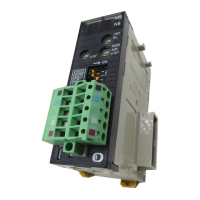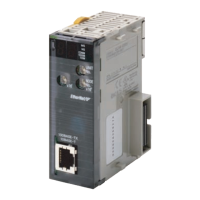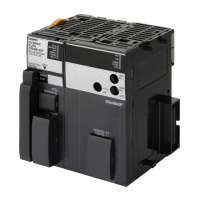181
Origin Search and Origin Return Functions Section 6-3
Setting range: 80000000 to 7FFFFFFF hex (−2,147,483,648 to 2,147,483,647)
pulses
I/O Settings Limit Input Signal Type
Specifies the type of input signal (normally closed or normally open) being
used for the limit inputs.
0: NC
1: NO
Origin Proximity Input Signal Type
Specifies the type of input signal (normally closed or normally open) being
used for the Origin Proximity Input Signal.
0: NC
1: NO
Origin Input Signal Type
Specifies the type of input signal (normally closed or normally open) being
used for the Origin Input Signal.
0: NC
1: NO
Positioning Monitor Time When the operating mode is set to mode 2, this setting specifies how long to
wait (in ms) for the Positioning Completed Signal after the positioning opera-
tion has been completed, i.e., the pulse output has been completed. A Posi-
tioning Timeout Error (error code 0300) will be generated if the motor driver's
Positioning Completed Signal does not come ON within the specified time.
Setting range: 0000 to 270F hex (0 to 9,999 ms)
The actual monitoring time will be the Positioning Monitor Time rounded up to
the nearest 10-ms unit + 10 ms max.
If the Positioning Monitor Time is set to 0, the function will be disabled and the
Unit will continue waiting for the Positioning Completed Signal to come ON. (A
Positioning Timeout Error will not be generated.)
Executing an Origin Search
Execute ORG(889) in the ladder program to perform an origin search with the
specified parameters.
Restrictions
The motor can be moved even if the origin position has not been determined
with the origin search function, but positioning operations will be limited as fol-
lows:
P
C
ORG(889)
P: Port specifier
Pulse output 0: #0000
Pulse output 1: #0001
C: Control data; Origin search and CW/CCW method: #0000
Origin search and pulse + direction method: #0001
Function Operation
Origin return Cannot be used.
Positioning with absolute
pulse specification
Cannot be used.
Positioning with relative
pulse specification
Outputs the specified number of pulses after setting the
current position to 0.

